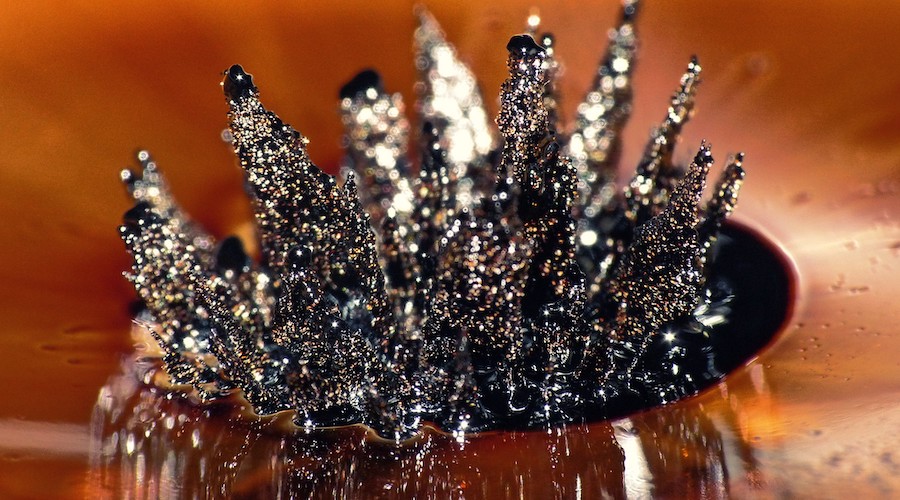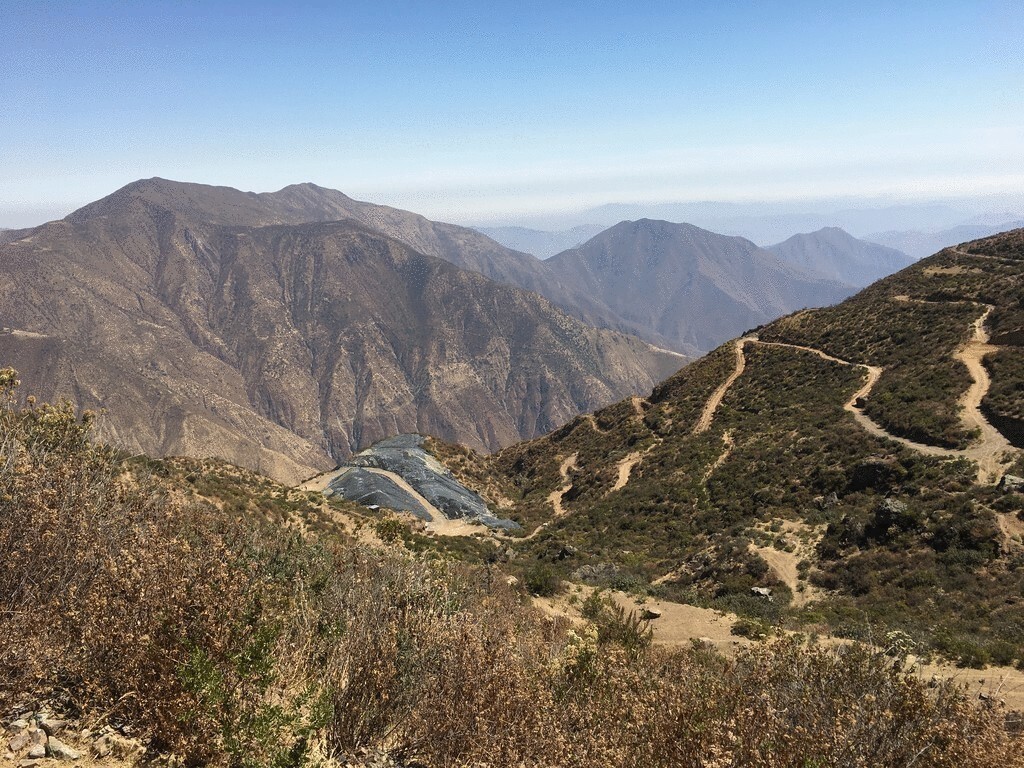World battles to loosen China’s grip on vital rare earths for clean energy transition

Refining rare earths for the green energy transition is hard. Just ask MP Materials and Lynas.
The world’s two biggest rare earths companies outside of China are facing challenges turning rock from their mines into the building blocks for magnets used across the global economy, from Apple’s iPhone to Tesla’s Model 3 to Lockheed Martin’s F-35 fighter jet.
The West’s push to develop independent supplies of critical minerals took on greater urgency after Beijing imposed export controls last month on the strategic metals gallium and germanium, raising global fears that China could block exports of rare earths or processing technology next.
Recent struggles by MP, Lynas and other companies to refine their own rare earths highlight the difficult task the rest of the world faces to break China’s stranglehold on the key group of 17 metals needed for the clean energy transition, interviews with more than a dozen consultants, executives, investors and industry analysts showed.
Technical complexities, partnership strains and pollution concerns are hampering companies’ ability to wrest market share away from China, which according to the International Energy Agency controls 87% of global rare earths refining capacity.
If projects continue to struggle, several economies could fail to meet their goal of cutting carbon emissions to net zero 2050 to minimize climate change’s impact, without Beijing’s involvement.
Plans for Australia’s Lynas to build a US rare earths refinery with a Texas-based partner have collapsed, according to two sources familiar with the matter. Lynas has said it is trying to finish a rare earths refinery in Western Australia that has faced hurdles and is building its own plant elsewhere in Texas.
MP’s goal of refining its own rare earth metals in 2020 was snagged by Covid-19 pandemic and technical challenges, shifting its target to the end of 2023. Updates could come on Thursday when the company is expected to report its quarterly results.
Late last year, US-based MP said it was commissioning refining equipment near its California mine as part of an intricate calibration process that has so far not succeeded, leaving the company reliant on China for refining and thus nearly all of its revenue. MP is also building a Texas magnet facility to supply General Motors that will require the California refining equipment to be operational.
“The (rare earths) commissioning process is painstaking, with stops and starts,” Jim Litinsky, MP’s CEO and largest shareholder, told investors in May.
MP, whose second-largest shareholder is China’s Shenghe Resources, declined to comment ahead of its results.
“The rare earths refining process can be very finicky,” said Kray Luxbacker, who heads the University of Arizona’s mining and geological engineering department and is unaffiliated with MP or its peers. “There are just so many complex steps.”
Rare earths magnets turn power into motion and are the essential components in an electric vehicle’s motor. They are lighter and can handle far higher temperatures than traditional magnets, in part due to their unique chemical properties.
Rare earths refineries must contend with 17 metals, depending on a deposit’s geology, each of which are nearly the same size and atomic weight, making separation complex. Those rare earths must be teased out in a specific order, preventing MP and its peers from cherry-picking specific elements they may want.
To extract neodymium and praseodymium to build EV magnets, for example, MP must first remove the less-desirable lanthanum and cerium that compose about 83% of its California deposit in a process that relies on an intricate cocktail of acids, bases and other chemicals that are tailored to the mine’s geology.
While MP relied on Chinese expertise to restart its mine— bought in 2017—that know-how is less helpful when it comes to tailoring refining equipment. Similar issues could plague about half a dozen other companies aiming to refine independently elsewhere in the world, analysts said.
“What’s happened in China over many years is that they’ve invested heavily and cleverly in the processing capacity to convert the (rare earths) material all the way from the mine through to the magnet,” said Allan Walton, a metallurgy professor at the University of Birmingham.
Economic control
China’s refining expertise has allowed the country to engineer rare earths prices at different stages in the processing chains to its advantage, including low prices for finished products, to inhibit foreign competition, analysts said.
Rare earths refining “is not really being addressed even by those who are developing magnet capacity,” said Ryan Castilloux, a minerals consultant at Adamas Intelligence.
By strategically focusing on industries that use the magnets—built with rare earths refined in China at profit margins purposefully kept low—Beijing can boost its booming EV industry, Castilloux added.
China’s model came into sharp relief last month when rare earths prices sank to their lowest level in nearly three years, due in part to rising Chinese supply. China also offers a 13% export rebate to magnet manufacturers using its material, furthering its dominance.
Beijing for years has allowed imports of lightly processed rock known as rare earths concentrate for refining. The strategy helps ensure prices that incentivize other countries to dig new mines but not build processing plants that can also produce radioactive waste, analysts said.
MP shipped about 43,000 metric tons of concentrate to China last year for refining. Regulatory filings show it has also been selling China fluoride waste—at a loss—left by a previous owner at its site in California, which has stringent storage regulations for the material.
Myanmar, Vietnam and others also ship concentrate to China for refining.
Lynas refines concentrate in Malaysia that it produces in Australia, but authorities in Kuala Lumpur plan to block the imports next year, citing concerns the Lynas plant leaks radioactive waste, a charge Lynas disputes. It aims to open a replacement processing plant in Australia later this year.
The company has long sold rare earth metals in the United States to privately held Blue Line to process into specialized materials.
In 2019, the pair agreed to build refining facilities near San Antonio, Texas and discussed with Trump administration officials their plans to be “the only large scale producer of separated (rare earth elements) in the world outside of China,” according to emails obtained by Reuters.
But that effort, funded in part by the Pentagon, has since collapsed, two sources told Reuters. Reasons for the collapse, which has not been previously reported, could not be immediately determined.
Blue Line deferred comment to Lynas. The Pentagon said it would not be able to immediately comment. Lynas referred to past press releases but declined further comment. Meanwhile, Lynas this week updated plans for other refining facilities it is building along the Texas coast with $258 million in Pentagon funding.
Elsewhere, projects across Sweden, South Africa, Australia and other countries aim to extract rare earths from mine waste and byproducts that could supply 8% of global demand successful, according to Adamas Intelligence.
Benchmark Mineral Intelligence, a market data provider, estimates that China refines 89% of the world’s neodymium and praseodymium, the key metals for EV magnets, a dominance that by 2028 is expected to dip to 75%.
China’s global control of dysprosium refining is forecast by Benchmark to slip from 99% in 2023 to 94% by 2028. Dysprosium helps retain magnetization at high temperatures.
Cleaner tech
Crucial innovation is also needed to break China’s stranglehold on the sector without sacrificing environmental quality, industry analysts said, with concerns over current processes’ toxic waste impeding projects.
Efforts by Leading Edge Materials to develop Sweden’s Norra Karr rare earths deposit were halted in 2016 over concerns that chemicals could leach into drinking water. The company reworked the mine plans to make them more sustainable and submitted a new environmental application this year.
Tesla in May announced plans to make EV magnets without rare earths, citing “environmental and health risks” in the existing process.
“China made a strategic decision decades ago to develop its rare earth processing capability, despite the environmental consequences of the available technology,” said Melissa Sanderson, president of American Rare Earths, which is developing several US rare earths projects.
American Rare Earths is working with US government scientists at the Lawrence Livermore Laboratory to develop bacteria that could process rare earths. Privately held Locus Mining and Aether Bio are also studying ways to use biosurfactants and nanotechnology, respectively.
UCore Rare Metals, Mosaic and privately held USA Rare Earth are also studying various processing technologies.
Still, cleaner solutions are years from production.
“If you can innovate and bring solutions to market that produce rare earths efficiently, you have a tremendous market opportunity,” said Nathan Picarsic, co-founder of the geopolitical consulting firm Horizon Advisory.
(By Ernest Scheyder, Eric Onstad, Nick Carey and Melanie Burton; Editing by Veronica Brown and Susan Heavey)
{{ commodity.name }}
{{ post.title }}
{{ post.date }}

2 Comments
Thomas
What are you talking about? Lynas updated its contract with the US DOD 2 days ago and the money Lynas is getting to build the Texas facility went from $120M to $258M. How is that classified as “collapsed”? Looks like whoever wrote this pile of lies needs to be fact checked. There is literally that same story under the “more news” to the right of the box I am currently typing this in.
Thomas
why was my first post about this article being incorrect when it comes to lynas’s contract with the DOD being confirmed 2 days ago for more money than initially?